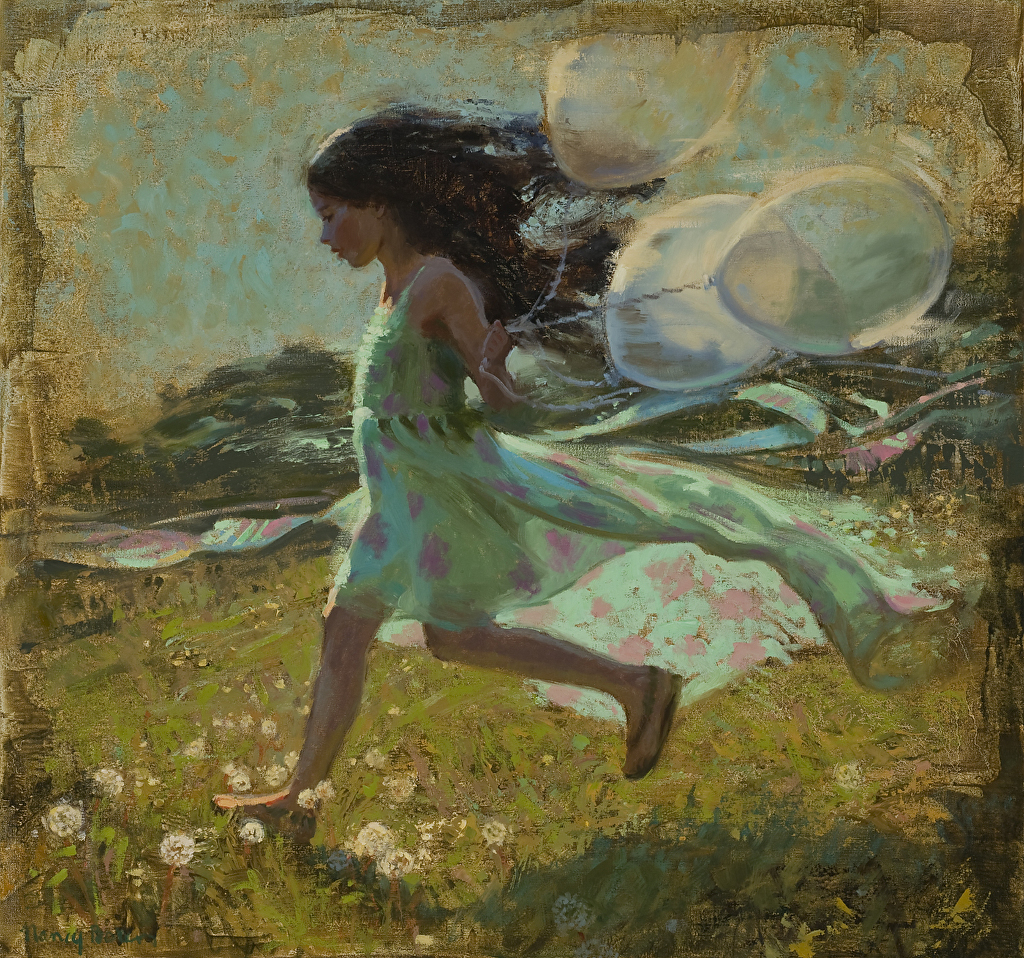Exploring Everything About Oil Paints: An Overview to Understanding Their Elegance and Value
Oil paintings have actually mesmerized target markets for centuries, providing a peek right into the imaginative mastery of various eras. Their abundant history is intertwined with cutting-edge methods and extensive emotional expression. Recognizing the products and techniques behind these artworks can improve recognition. In addition, the market for oil paintings offers possibilities for financiers and collection agencies alike. As one explores this remarkable globe, the concern arises: what makes an oil paint absolutely useful?
The History of Oil Painting: A Journey With Time
Although oil painting has origins that go back to old times, it absolutely grew throughout the Renaissance, when musicians discovered its flexibility and abundant color possibility. Early instances can be traced to the 7th century, with methods progressing especially throughout societies. The medium came to be famous in Northern Europe in the 15th century, specifically with the works of musicians like Jan van Eyck, that originated its usage for comprehensive realism and lively tones. This duration noted a separation from tempera paints, permitting for greater deepness and texture. As oil painting spread, it influenced many musicians, resulting in masterpieces by popular numbers such as Leonardo da Vinci and Rembrandt. The tool's legacy continues, forming the art globe well right into modern times.
Comprehending Oil Paints: Materials and Techniques
As artists discover the world of oil paints, they run into a diverse array of products and strategies that specify this medium. The key elements of oil paint include pigments, which provide color, and drying out oils, such as linseed, that bind the pigments and promote application. Various additives can change the paint's appearance and drying time, enhancing flexibility. Methods like glazing, where transparent layers are accumulated, and impasto, which entails using thick paint, enable different aesthetic impacts. In addition, using brushes, palette knives, and even fingers can create special appearances and finishes. Comprehending these techniques and materials enables artists to completely share their creativity and attain the desired effect in their artwork.
The Function of Shade in Oil Paintings
Shade plays a crucial duty in oil paintings, influencing both aesthetic charm and psychological resonance. Comprehending color concept fundamentals, consisting of the connections in between colors, can enhance a musician's capability to share state of mind and ambience. Additionally, mastering color blending methods permits greater deepness and richness in a painting's combination.

Shade Theory Basics
Recognizing shade concept is vital for artists dealing with oil paints, as it creates the structure for creating unified and visually interesting make-ups. Shade theory incorporates the research of exactly how shades interact, the color wheel, and the connections in between main, additional, and tertiary shades. Musicians use corresponding shades to improve contrasts and develop focal points, while comparable colors advertise unity and cohesiveness within a piece. In addition, the ideas of awesome and cozy shades affect the perception of deepness and space in a paint. Realizing these principles permits artists to manipulate shade successfully, leading the visitor's eye and communicating their desired message. Mastery of color theory eventually improves a musician's ability to share emotions and ideas with their job.
Emotional Impact of Shade
The emotional impact of color in oil paintings plays a crucial duty in exactly how visitors attach and view with artwork. Shades stimulate particular sensations and moods, influencing the customer's mood. For instance, cozy tones like oranges and reds can produce a feeling of warmth and energy, while amazing tones such as blues and eco-friendlies commonly evoke peace or introspection. Artists strategically pick shade combinations to improve narrative components, guiding the target market's emotional journey. The saturation and contrast of shades better intensify these impacts, drawing interest and producing emphasis. Ultimately, the interaction of shades in oil paints not only boosts their aesthetic allure however also works as an effective tool for psychological expression, enhancing the viewer's experience and interpretation.
Shade Mixing Techniques
While several facets of oil paint add to the total composition, mastering color mixing techniques is vital for attaining wanted results and depth. Color blending can be come close to via numerous methods, consisting of the additive and subtractive procedures. Additive blending entails incorporating shades of light, while subtractive mixing depends on pigments, where shades blend to develop brand-new shades. Artists typically utilize a restricted scheme to produce unified jobs, recognizing the relationships between primary, second, and tertiary colors. Techniques such as glazing and scumbling further enhance deepness and brightness. By masterfully blending shades, an artist can stimulate feelings, develop focal points, and accomplish a sense of realism, eventually raising the paint's aesthetic and emotional effect.
Famous Oil Painters and Their Iconic Functions

Famed for their proficiency of color and strategy, oil painters have actually developed a few of one of the most popular artworks in history. Renowned musicians like Vincent van Gogh mesmerized audiences with his emotive brushwork in "Starry Evening," while Claude Monet's "Impact, Sunrise" laid the foundation for Impressionism. Leonardo da Vinci's "Mona Lisa" continues to be an enduring sign of creative wizard, showcasing his skill in recording human expression. Rembrandt's "The Night Watch" highlights his ingenious use of light and darkness. Various other noteworthy numbers consist of Pablo Picasso, that revolutionized contemporary art with his strong trial and error in works like "Les Demoiselles d'Avignon," and Georgia O'Keeffe, whose vibrant depictions of flowers and landscapes helped specify American innovation. Each musician's one-of-a-kind design contributed significantly to the oil painting landscape.
Just how to Examine the High Quality of an Oil Painting
Reviewing the top quality of an oil paint includes a careful analysis of workmanship methods, in addition to an evaluation of color and composition. Observing brushwork, layering, and the application of paint can disclose the musician's skill degree. In addition, the interaction of shades and the total arrangement of components add significantly to the paint's visual worth.
Evaluating Workmanship Methods
A thorough evaluation of craftsmanship techniques is vital for figuring out the quality of an oil painting. Evaluators need to initially check out the application of paint; thick, distinctive brushstrokes might suggest a knowledgeable hand, while overly uniform applications could suggest an absence of depth. oil paintings for sale. The layering method is also essential; the existence of lusters and differed density can enhance luminance and complexity. Additionally, the high quality of the materials used, such as the canvas and pigments, plays a considerable function in toughness and general visual. Interest to information in aspects like edges and shifts between shades shows the musician's commitment to their craft. Eventually, these techniques contribute to the paint's emotional influence and market value, offering as indications of the musician's ability and intent
Examining Color and Make-up
While evaluating the top quality of an oil painting, one need to concentrate on the interaction of shade and make-up, as these components are fundamental to the art work's overall influence. Shade selections can establish and evoke feelings mood; therefore, the musician's scheme must be checked out for harmony and contrast. A well-balanced structure directs the customer's eye and develops a feeling of unity. Musicians commonly employ strategies like the regulation of thirds or leading lines to enhance visual passion. In addition, using light and shadow can add deepness, boosting the three-dimensionality of the paint. Eventually, a successful oil painting weds shade and structure, involving the customer and inviting a deeper recognition of the artist's vision and method.
Taking care of and Preserving Oil Paintings
Correct care and preservation of oil paints is vital for preserving their stability and durability. To safeguard these artworks, it is crucial to present them far from straight sunshine, which can create fading and discoloration. Maintaining a secure setting with controlled temperature level and moisture more aids in avoiding damage. Cleansing must be done delicately making use of a soft, dry towel, preventing any kind of rough chemicals that might damage the paint or varnish. Normal assessments for indications of wear and tear, such as flaking or cracking, are advisable. When saving or moving oil paints, proper padding and framing are necessary to avoid physical damage. Inevitably, diligent treatment adds to the visual charm and worth of oil paintings with time.
The Market for Oil Paints: Accumulating and Investing
Understanding the market dynamics for oil paints is necessary for enthusiasts and financiers alike. The worth of these art work is influenced by different factors, including the musician's credibility, historic significance, and existing trends. Enthusiasts typically look for items that resonate personally while taking into consideration prospective gratitude in worth. Public auctions and galleries function as main venues for buying and selling, with prices rising and fall based upon need and rarity. Spending in oil paints calls for study into the market, in addition to an understanding of authenticity and provenance. Additionally, emerging artists might provide opportunities for considerable returns, while established names can regulate high rates. Overall, a calculated strategy to gathering can generate both visual pleasure and monetary benefits.

Frequently Asked Concerns
What Are the Ecological Effects of Oil Painting Products?
The ecological influences of oil painting products include the launch of volatile organic compounds (VOCs), hazardous waste generation, and resource removal for pigments. These variables add to pollution and ecological deterioration, raising concerns amongst eco mindful artists and customers.
How Do Different Canvases Impact Oil Paint Results?
Various canvases influence oil paint results considerably. Texture, surface area, and absorbency quality can modify paint application, drying out times, and shade vibrancy. Artists frequently pick specific canvases to accomplish preferred effects and website improve their artistic expression.
Can Oil Paintings Be Restored if Harmed?
Oil paints can certainly be recovered if harmed. Specialist conservators use various methods to repair rips, clean surfaces, and address staining, guaranteeing that the artwork maintains its original beauty and worth for future generations.
What Are the Indicators of an Original Oil Paint?
The signs of an initial oil paint include visible brush strokes, texture variations, and an uneven canvas weave (oil paintings for sale). Furthermore, authenticity might be validated through provenance, trademarks, and the existence of a varnish layer unique to oil tools
Exactly How Has Innovation Influenced Modern Oil Painting Techniques?
Modern technology has considerably influenced modern oil painting methods by presenting electronic devices for preparation, improved products for structure and durability, and on the internet platforms for selling and sharing art, therefore increasing musicians' imaginative possibilities and target market reach. Oil painting has origins that date back to old times, it absolutely flourished throughout the Renaissance, when artists found its flexibility and rich color possibility. The emotional influence of shade in oil paintings plays a crucial function in just how customers connect and view with artwork. While lots of aspects of oil paint add to the overall structure, understanding color blending techniques is vital for achieving desired impacts and deepness. Examining the top quality of an oil painting includes a cautious analysis of craftsmanship strategies, as well as an evaluation of color and make-up. While examining the top quality of an oil paint, one have to focus on the interaction of shade and structure, as these components are basic to the artwork's total impact.
 Tiffany Trump Then & Now!
Tiffany Trump Then & Now! James Van Der Beek Then & Now!
James Van Der Beek Then & Now! Christy Canyon Then & Now!
Christy Canyon Then & Now! Katey Sagal Then & Now!
Katey Sagal Then & Now! Robin McGraw Then & Now!
Robin McGraw Then & Now!